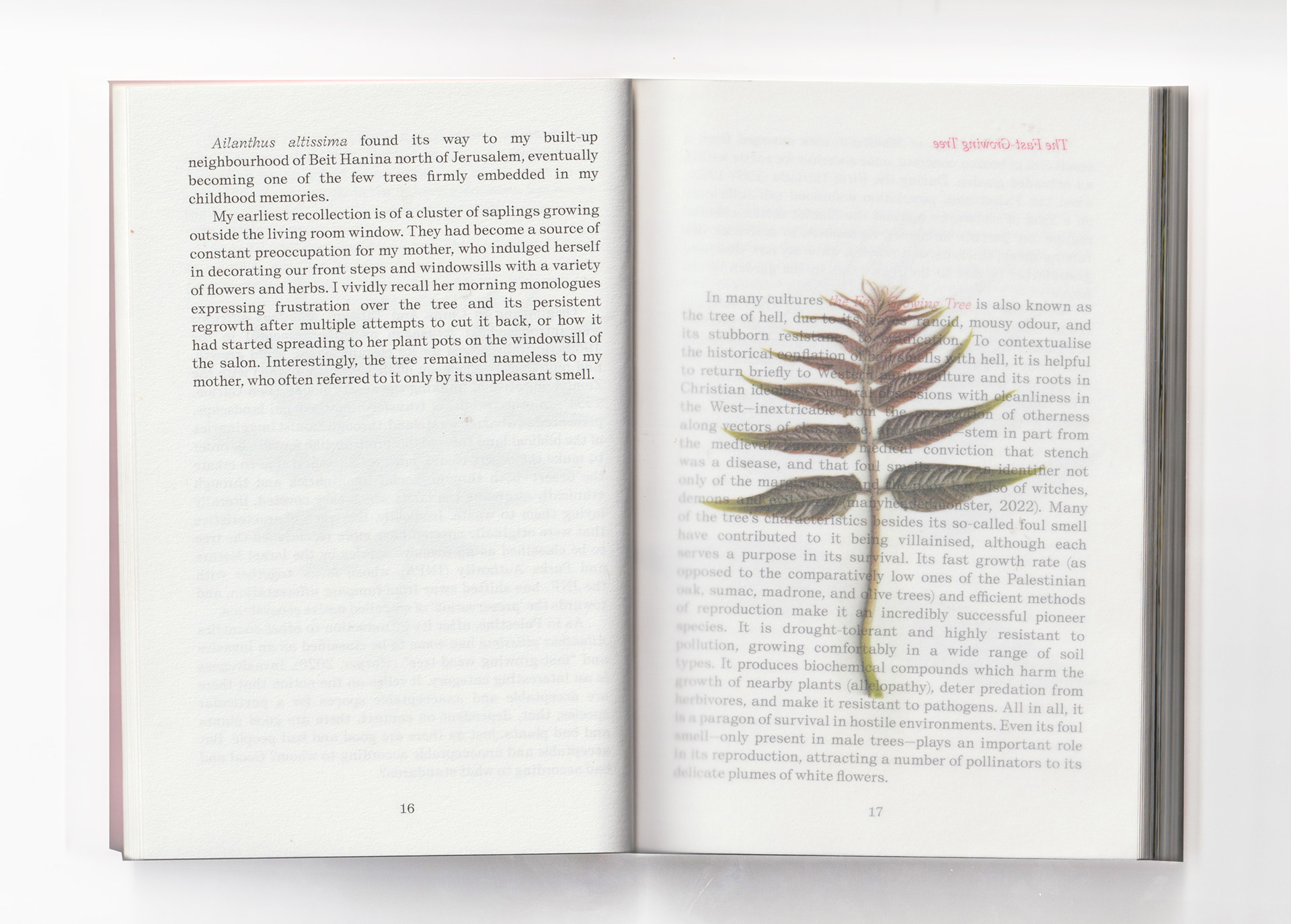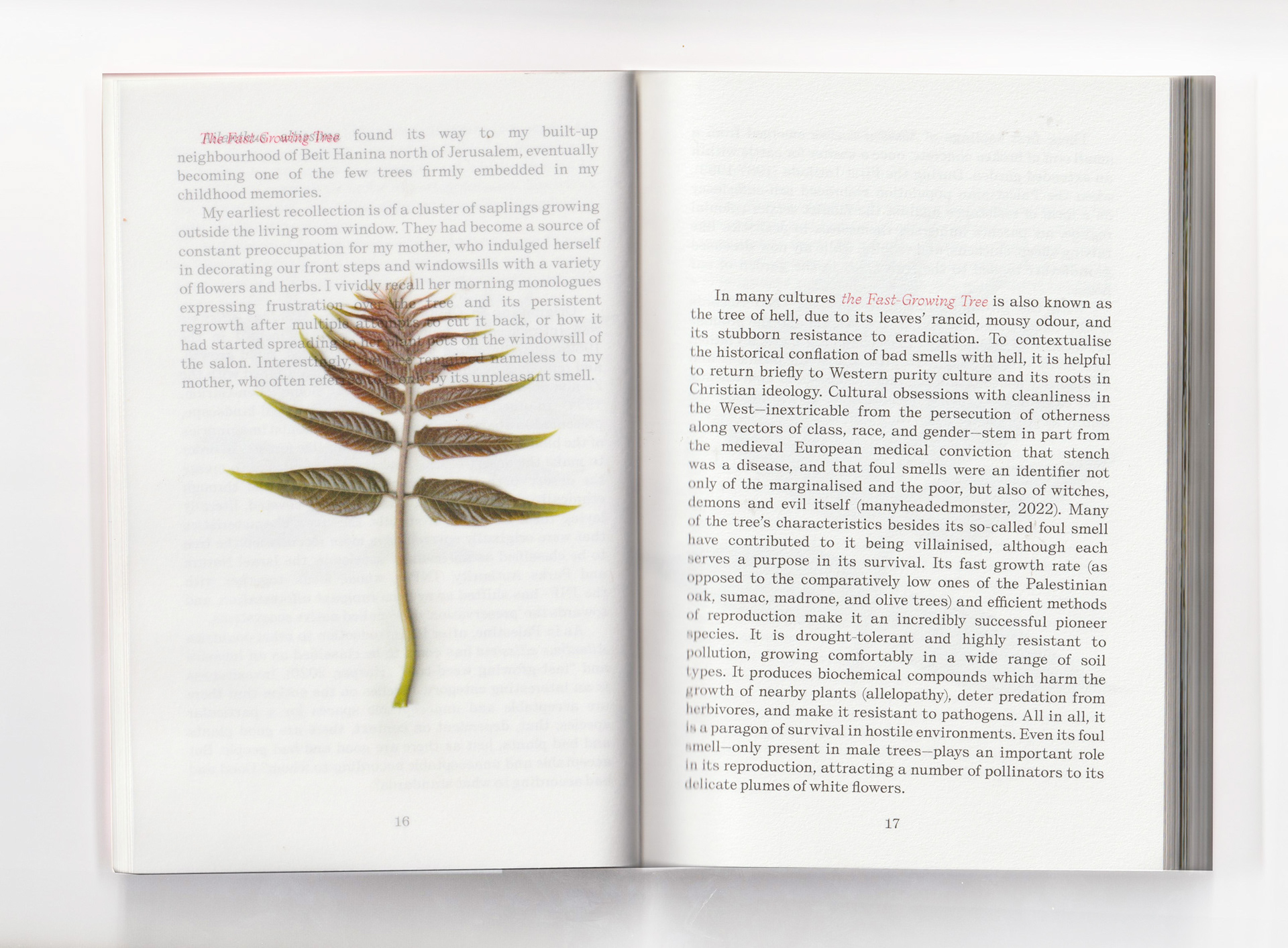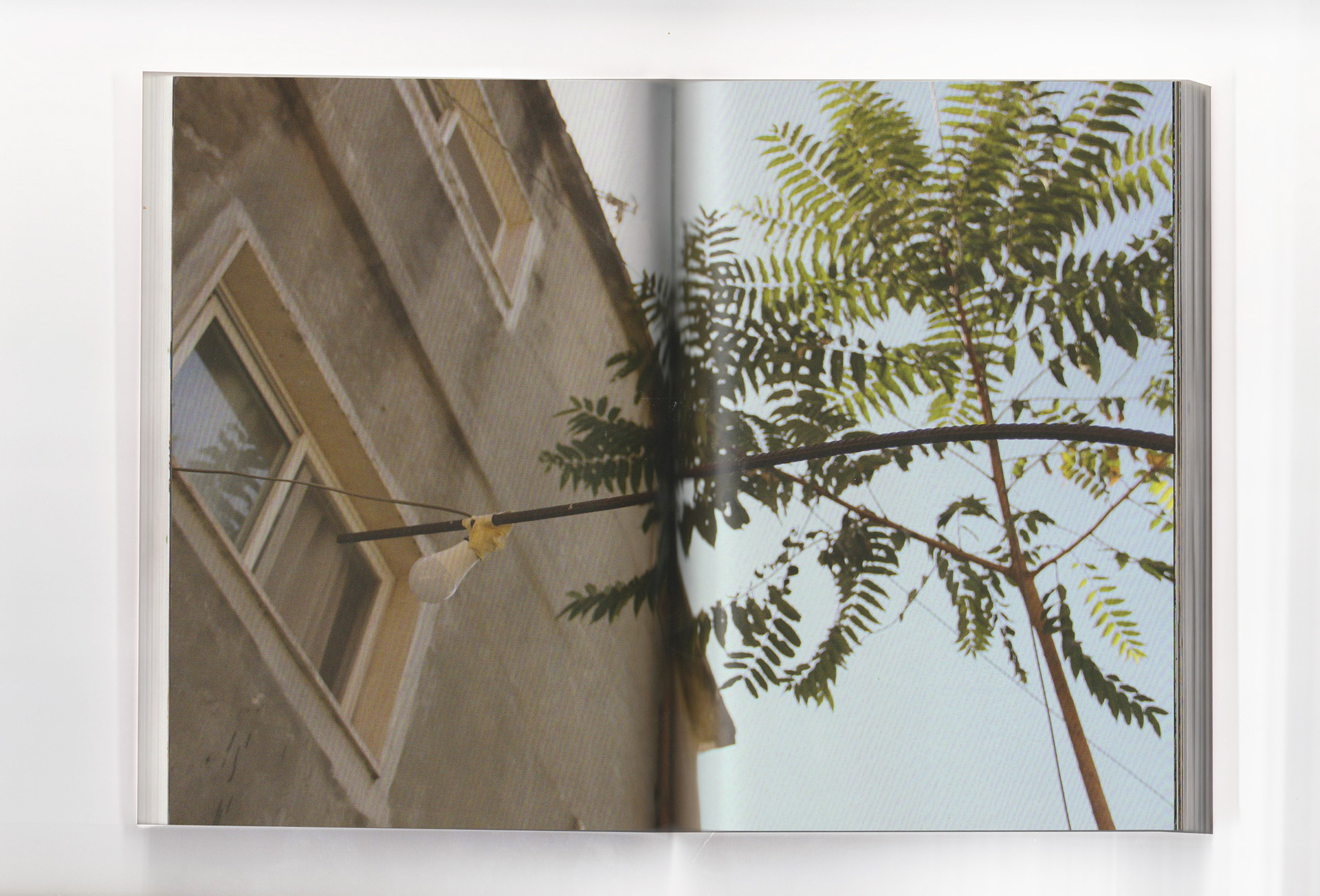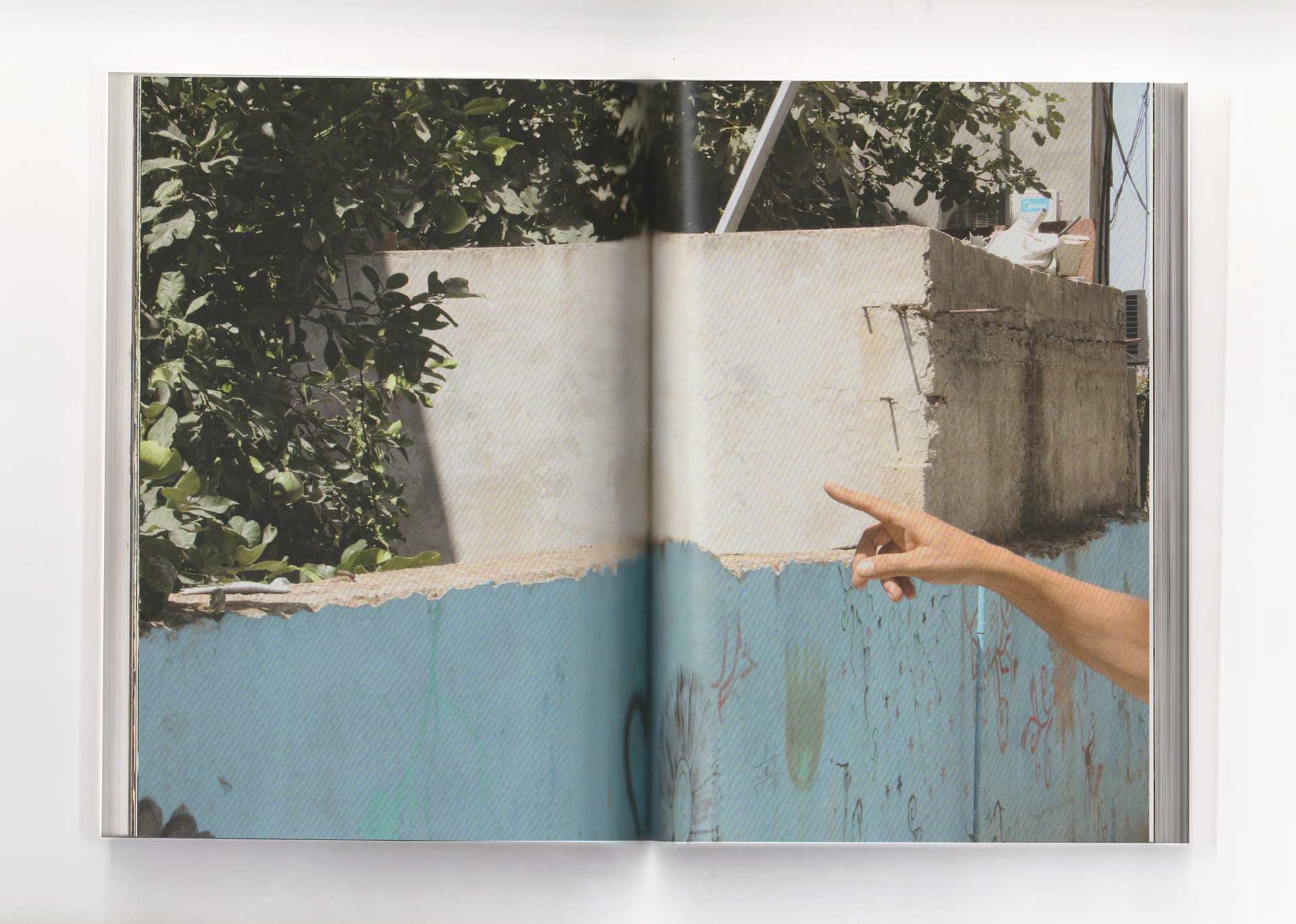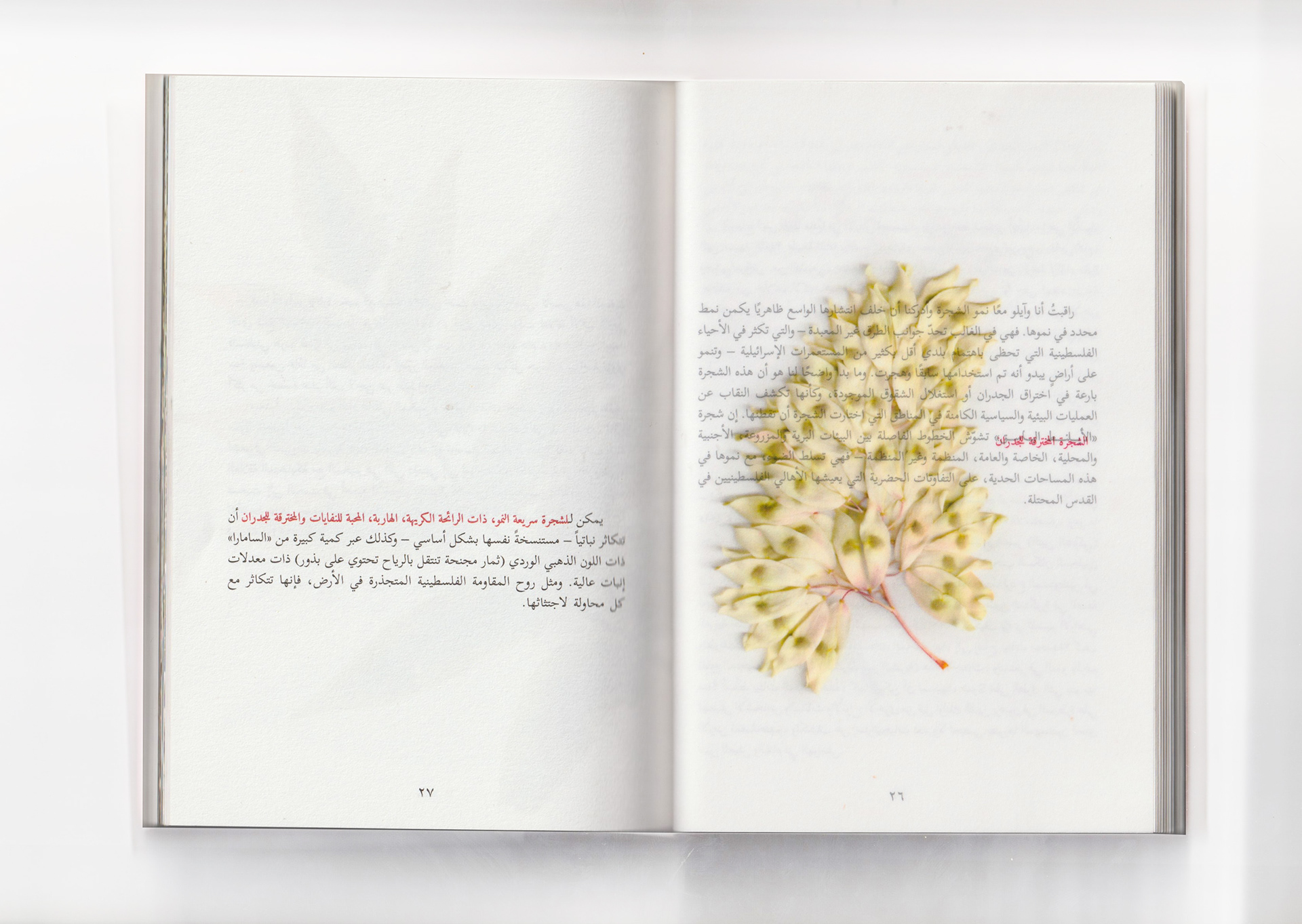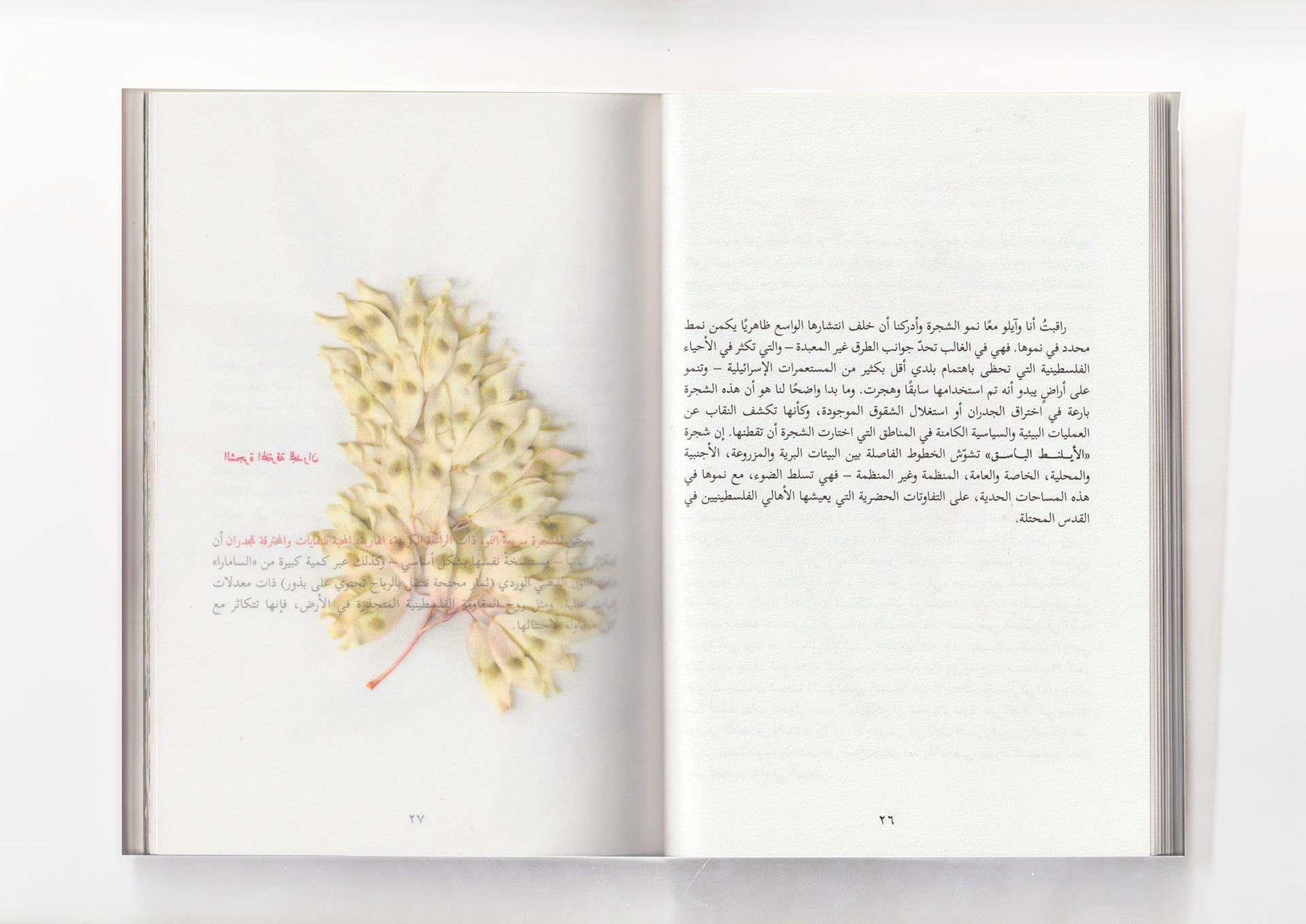Written in both English and Arabic, the Fast-Growing Stinking Escaped Waste-Loving Wall-Breaching Self-Cloning Other-Than-Natural No-Man's Tree delves into the language of invasiveness through intimate encounters with Ailanthus altissima—the Tree of Heaven. Through her personal reflections, Areej narrates her interactions with the tree across various stages of her life and in different places in Palestine, tracing how the tree’s persistent presence intertwines with recent shifts in Palestinian social, political, and ecological landscapes. In her text, Ailo unpacks the concepts that emerge throughout Areej’s personal narrative, examining the notion of weediness associated with the tree as a means of addressing issues of belonging and resistance within the settler colonial context of Palestine.
In August 2022, Ailo visited Palestine and together with Areej we went on various research trips, driving around the country in the blazing heat, mostly observing and spending time with trees, ones we had been searching for and ones that found us, sacred and non-sacred, on both sides of the Israeli separation wall. One of the trees that found us—almost everywhere we went—was Ailanthus altissima, otherwise known as the Tree of Heaven, Chinese Sumac or Stinking Sumac in English. As we analysed the growth patterns of this tree, particularly in Beit Hanina, Jerusalem, and Dheisheh Refugee Camp, Bethlehem, many questions emerged. Our exchanges inspired us to explore these reflections in a joint piece, culminating in this book.
Rather than forming a singular narrative, individual texts weave in and out of each other, with Ailo’s text on the right of each printed spread, facing Areej’s narrative on the left.
Printed on transparent paper, are scans of ailanthus leaves, samaras (winged fruits), and seedlings, sprouting from between both texts. These were collected from trees around Areej’s home in Jerusalem, most of which she directly refers to in her text. The scans are occasionally accompanied by a new name for the tree that reflects the unfolding narrative and overwrites its Linnaean taxon. Pushing against systems of classification inherited from racist & imperialist European science, a messy, iterative, imperfect naming of the tree unfolds throughout the text in layers, like a palimpsest, documenting the various ways people encountered throughout the project relate to the tree.
Nestled between the Arabic and English texts are photographs taken by Ailo during her trip to Palestine in 2022 that capture the layered spatialities and ecologies of the tree in the Dheisheh refugee camp.
